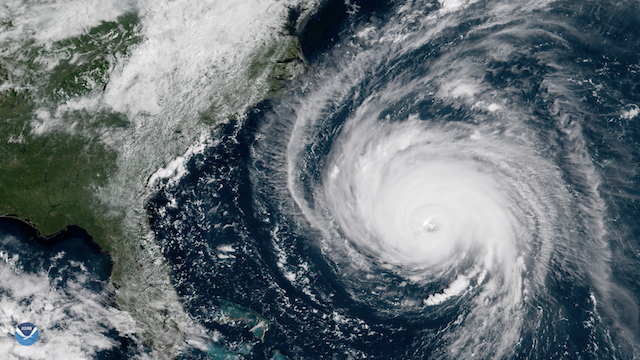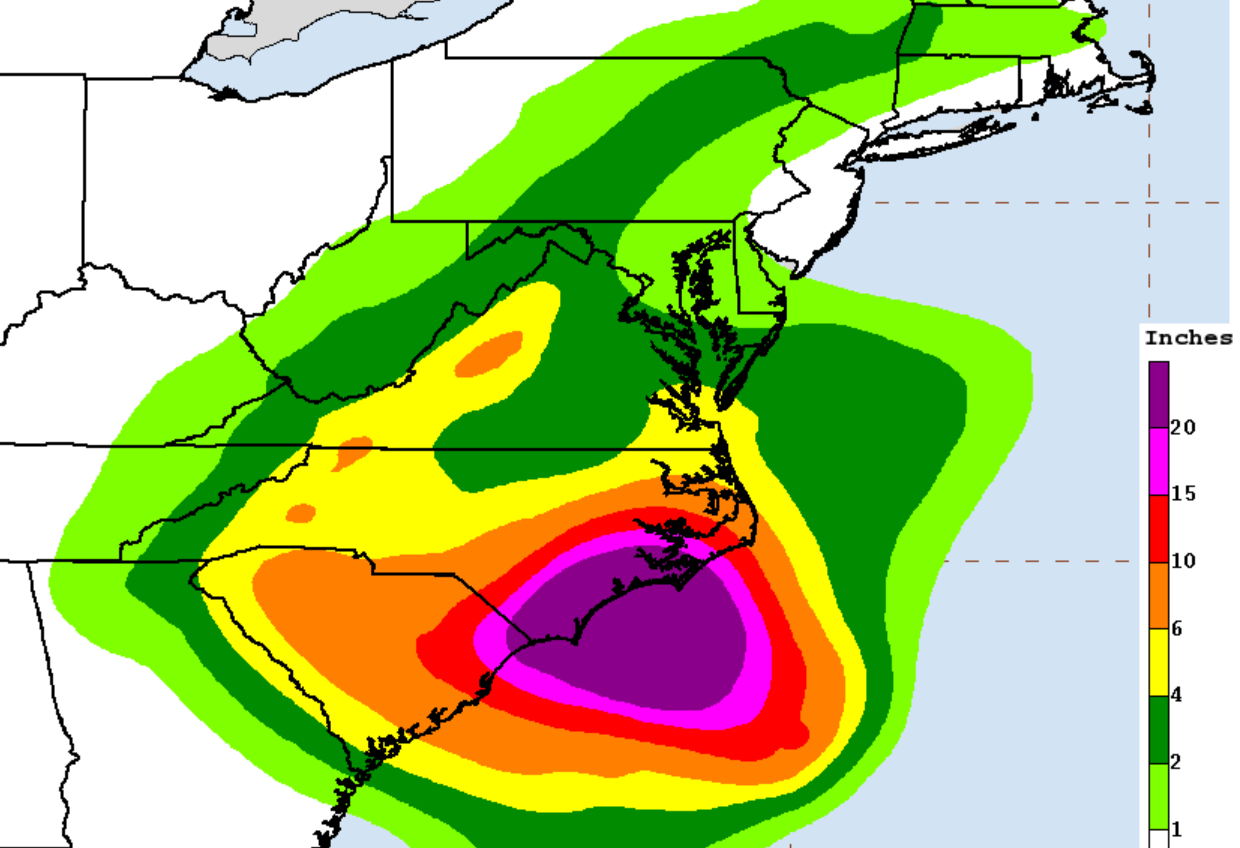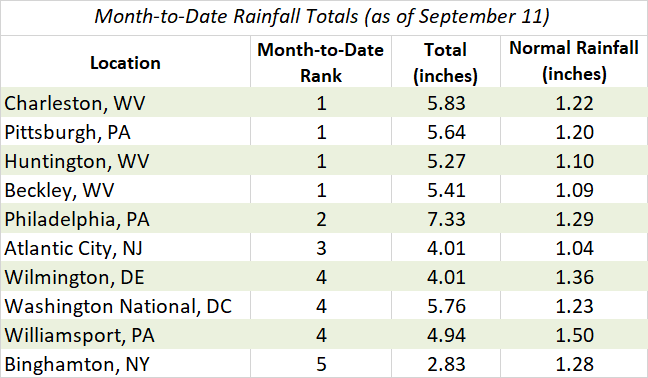What Hurricane Florence Could Mean for the Northeast
Hurricane Florence is projected to make landfall on Friday, bringing with it concerns of heavy rain, damaging winds, and life-threatening flooding. Image from NOAA.
Hurricane Florence is continuing to make its way towards the Southeast as a significant hurricane. Rather than following a path out to sea like so many tropical systems do, a blocking high pressure system in the atmosphere (located over Bermuda) is acting in a way that is funneling this hurricane right towards the Carolinas. Evacuations took place in many coastal areas in the South as people prepared for the significant impacts expected from this powerful storm. As Florence continues to move westward, forecast models have shown an increased probability that the storm will stall over the Carolinas after making landfall.
This National Weather Service map shows the predictions for heavy rain extending throughout much of the East Coast.
Although Florence is not heading directly towards the Northeast, effects from this powerful hurricane will be felt along much of the East Coast. The stalling nature of this hurricane is predicted to escalate the dangers associated with this storm. Flash flooding and gusty winds are possible beyond the path of the storm, primarily in parts of the Mid-Atlantic. Heavy rain is predicted in areas where the ground is already saturated from a wetter-than-normal summer in parts of Maryland, Pennsylvania, Delaware, and West Virginia. This especially poses a significant threat for low-lying areas in mountainous regions.
September has been off to a rainy start for parts of the Northeast, furthering the risk of flooding from the remnants of Florence as the storm stalls along the East Coast.
Rip currents and dangerous surf conditions will be present along ocean beaches across the Northeast as this storm continues to churn through the Atlantic. For more information, including maps and helpful graphics depicting the track and intensity of Hurricane Florence, check out the National Hurricane Center.



